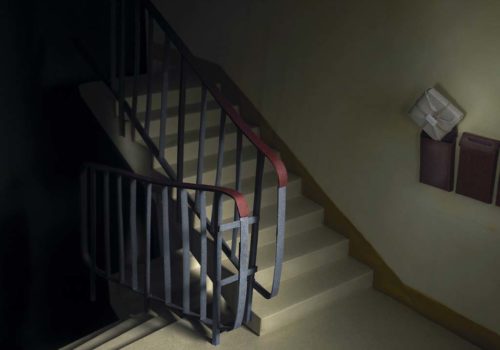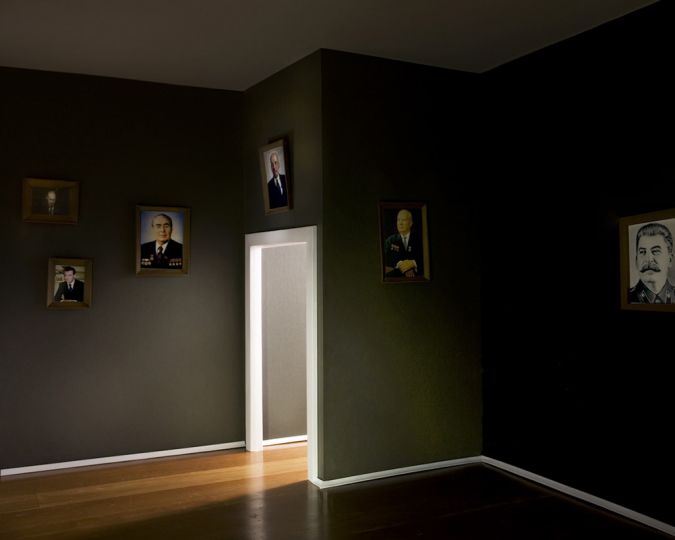The work represented in this application is part of the Nostalgia portfolio, an ongoing body of work that I began in 2008. The pieces are miniature sets constructed out of paper and then photographed. The work is printed as lambda prints sized at around 24 x 32 inches. The project is a reflection on the topic of exile, home, and developing a relationship with one’s past and belonging. I am contemplating a number of metaphorical connections to concurrent political events in my homeland of Russia and the country’s uneasy relationship with its own past.
“Giving in to homesickness was a precarious danger, wherein one risked an overwhelming nostalgia that would idealize the past and reject a critical relationship to the present.” – T. J. Demos
“It is worth considering the shape of nostalgia in the present, when fragments of the past are energetically manufactured and avidly consumed but do not necessarily correspond to the evidence of experience.” – Peter Fritzsche
“Nostalgic memory is employed to connect the present to a particular version of the past. By establishing a link between a “self-in-present” and image of “self-in-past,” nostalgic memory also plays a significant role in reconstruction and continuity of individual and collective memory.” – Svetlana Boym
The spaces in my work are in a transient state. They are not specific to their own location; they are not geographically defined. Something is always about to happen; something is always about to change. They are always incomplete and uncanny and at the same time, they vigorously defend their existence asserting their position in my memory. I am seduced into believing that they are there. I feel ashamed and constantly surveyed, afraid of being accused of not crediting them their historical validity.
In the early part of the 20th century politicians, activists and artists in Communist Russia were involved in an act of building a Soviet myth, creating a new space-time continuum, while violently eradicating the past by erasing facts from the history texts, documents, photographs, and from the consciousness of people. In the process, a new history was fabricated, thus creating a new order, a new collective memory, and turning and entire country and its many cultures into exiles in their own land.
In the years since, Vladimir Nabokov’s explorations of nostalgia and reflections on exile, and Ilya Kabakov’s reconstructing of the past, to name a few examples, are all part of a ritualistic return or an obsessive homecoming and anxious preservation of memory. Nostalgia in the work of these artists is palpable and real and has great impact onto constructs of cultural memories. They do, however, remind us that the images produced and circulated within that culture need to be carefully examined. Perhaps, while remnants of history are scattered all over with no sign of provenance, they have no ability to tell a story of their own but can only remain in a form of melancholic nostalgia.
Pavel Romaniko
Weekend portfolio selected by Quentin Bajac

















